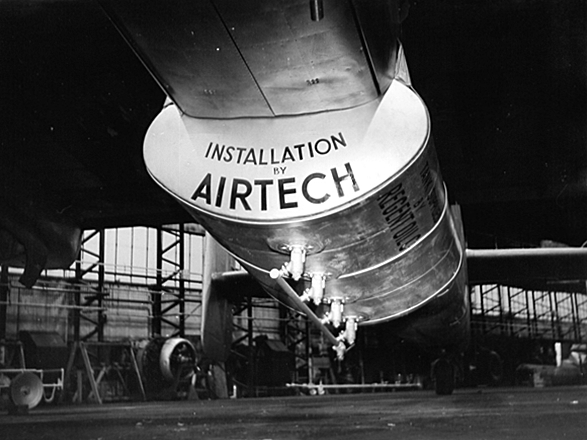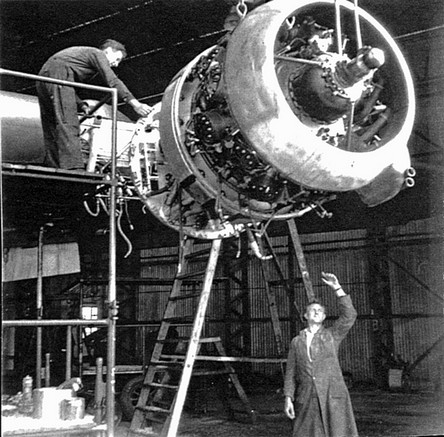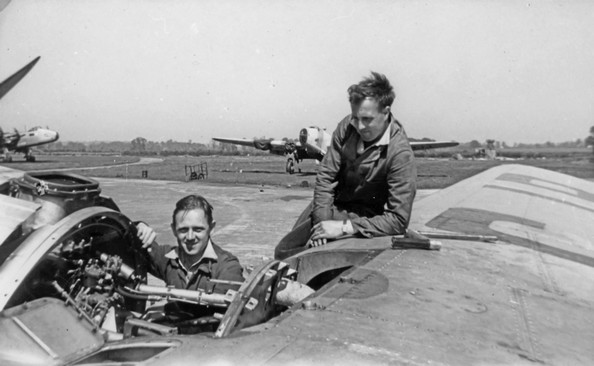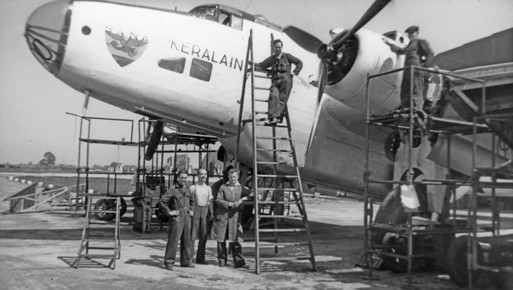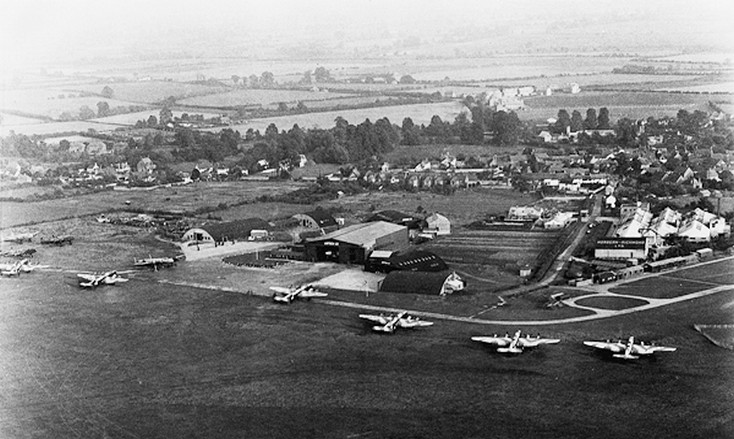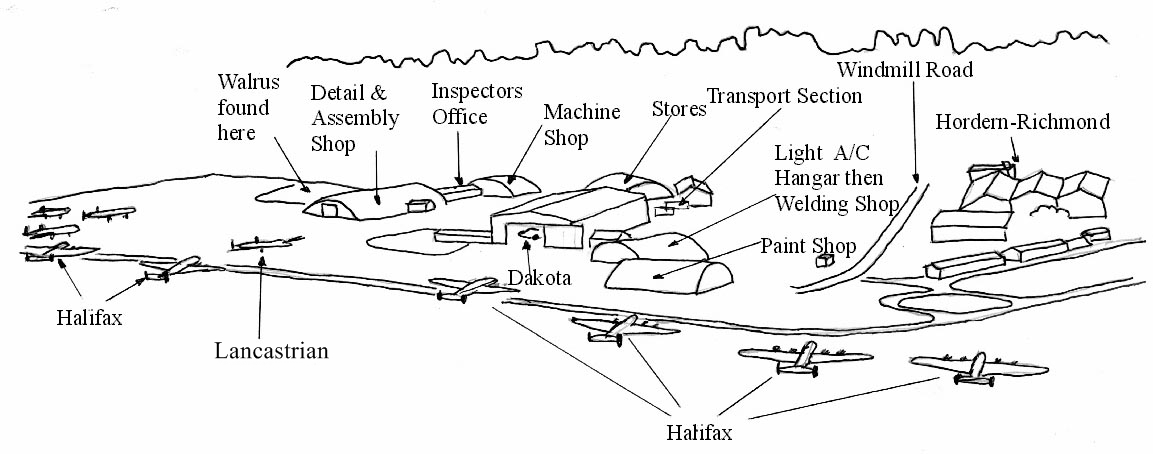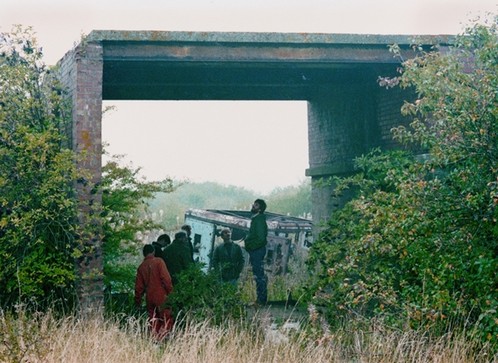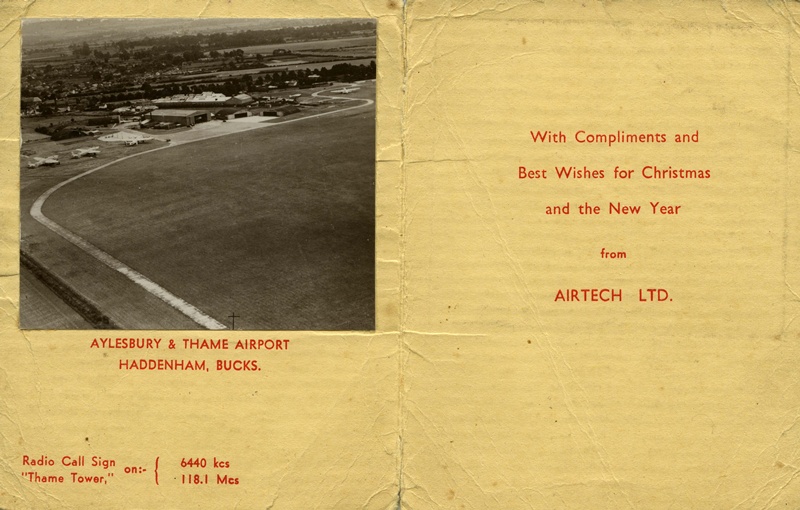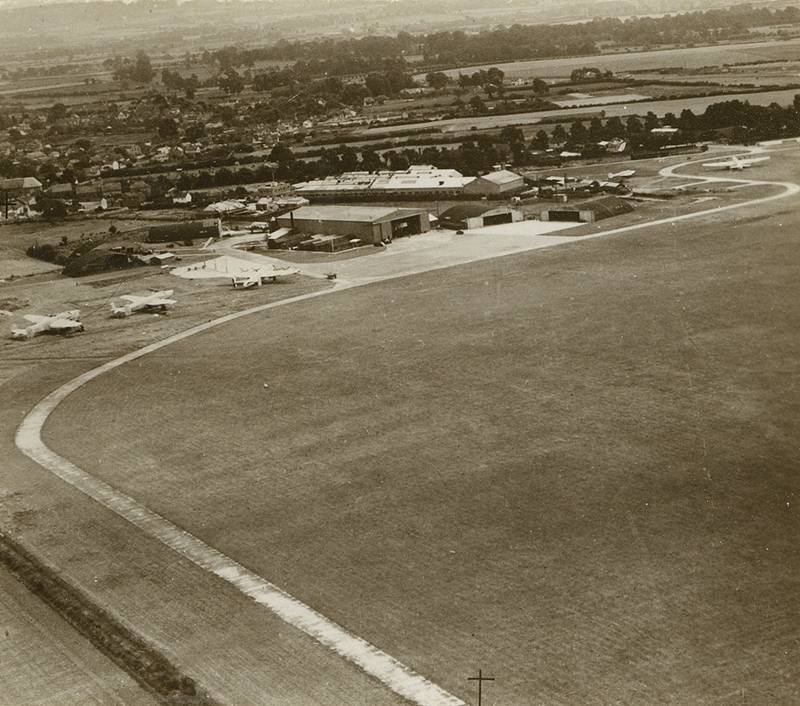Thomas Cholmondeley Tapper and Dennis Fox who had opened the airfield
in 1939 returned from the war having both suffered injuries.
Dennis
crashed his aircraft due to loss of fuel returning from a bombing raid. He
suffered terrible injuries with multiple broken bones. In fact, he had the
'distinction' of surviving the greatest number of broken bones of any RAF
casualty, something he suffered from for the rest of his life.
Thomas
was rejected on medical grounds from flying with the RAF and so joined the
Air Transport Auxiliary. In fact he spent his training at Haddenham with
No5 Ferry Training Pool which must have seemed very strange! However it
had it's compensations as he met his future wife, Margaret Watson, here.
Thomas suffered severe head and leg injuries in a car crash on his way to
the airfield at Kirkbride, home of No16 Ferry Pool.
On de-requisition from the Government the aerodrome was handed back to CTF Aviation, not entirely unstintingly because they charged the two for the land that had been acquired when the airfield was extended! It was this that probably prompted the pair to sell the airfield.
In August 1946 a firm called Chartair was founded at Haddenham by
Grp.Capt. Guy Lawrence to do air charter work, initially with a Percival
Proctor but soon after with four Airspeed Consuls (which had been
purchased on behalf of Air Malta which Chartair had a one-third stake in).
Most of their work was done from Croydon which was still London's main
civil airport. Group Captain Lawrence had been awarded the DFC, DSO and
OBE for his two tours of operations in Bomber Command, flying Whitley's,
Lancasters and Halifaxes. He had also been a member of the British Ski
Team before the war, (is this how he knew Thomas Cholmondeley Tapper? Guy
Lawrence was knighted in 1976 having become a major figure in the food
industry).
Chartair bought Haddenham Airfield from CTF Aviation on
February 14th 1947 with the aim of developing an aircraft overhaul and
maintenance centre for the rapidly growing number of small airlines
springing up in Britain and Europe. This new concern was to be called
Airtech Ltd and its first Directors were Guy Lawrence, Wing Cdr. D.S.Green
and Thomas Cholmondeley Tapper and Dennis Fox. Shortly after the purchase
Chartair merged with British American Air Services which was running
freight services from Bovingdon using Halifaxes.
In the beginning the
majority of work consisted of engine purchase and overhaul, especially in
connection with the Bristol Hercules which was the powerplant for the
Halifax which itself was becoming the workhorse of small cargo firms. One
batch of engines destined for scrapping at International Alloys in
Aylesbury, (but actually a brand new contract completion batch), was
purchased at minimal cost and following an inspection by a D Licensed
engineer bought in from BOAC was then sold on at great profit. Within just
a few months the company had rapidly organised its resources to a point
where Halifax, Dakota, Consul and Rapide airframe overhaul and repair was
well under way as well as overhaul of Hercules, Cheetah and Gipsy
engines.
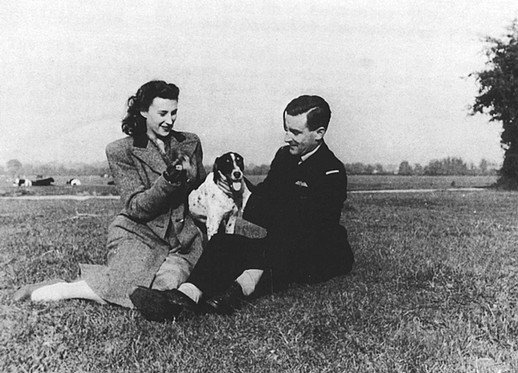
Thomas Cholmondeley Tapper and Margaret Watson shortly after their wedding in 1945.
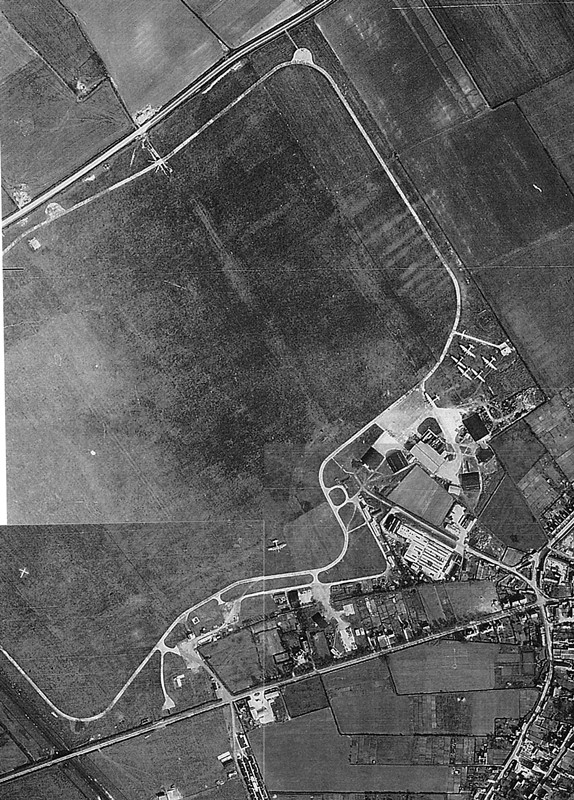
This photograph was taken in
1950 and shows very well how the airfield had been extended during the
war. The remains of Windmill Road can be seen as a 'parch' mark across the
centre of the airifield. Several Halifax bombers can be seen outside
Airtech's premises. Compare this shot to that in the chapter on wartime
gliding at Haddenham.
